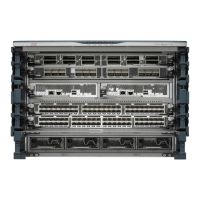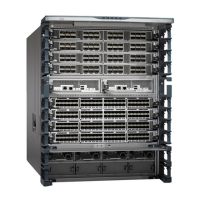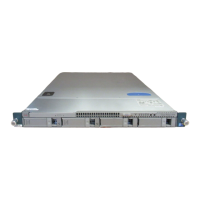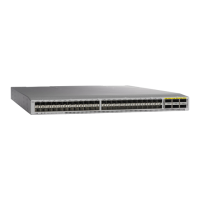Send document comments to nexus7k-docfeedback@cisco.com.
9-12
Cisco Nexus 7000 Series NX-OS Unicast Routing Configuration Guide, Release 4.x
OL-20002-02
Chapter 9 Configuring IS-IS
Configuring IS-IS
DETAILED STEPS
You can configure the following optional parameters for IS-IS in interface mode:
Command Purpose
Step 1
config t
Example:
switch# config t
switch(config)#
Enters configuration mode.
Step 2
interface
interface-type slot/port
Example:
switch(config)# interface ethernet 1/2
switch(config-if)#
Enters interface configuration mode.
Step 3
medium {broadcast | p2p}
Example:
switch(config-if)# medium p2p
(Optional) Configures the broadcast or point-to-point
mode for the interface. IS-IS inherits this mode.
Step 4
ip router isis
instance-tag
Example:
switch(config-if)# ip router isis
Enterprise
Associates this IPv4 interface with an IS-IS instance.
Step 5
show isis [vrf
vrf-name
] [
instance-tag
]
interface [
interface-type slot/port
]
Example:
switch(config-if)# show isis Enterprise
ethernet 1/2
(Optional) Displays IS-IS information for an interface.
Step 6
copy running-config startup-config
Example:
switch(config)# copy running-config
startup-config
(Optional) Saves this configuration change.
Command Purpose
isis circuit-type {level-1 | level-2 |
level-1-2}
Example:
switch(config-if)# isis circuit-type
level-2
Sets the type of adjacency that this interface
participates in. Use this command only for routers
that participate in both Level 1 and Level 2 areas.
isis metric
value
{level-1 | level-2}
Example:
switch(config-if)# isis metric 30
Sets the IS-IS metric for this interface. The range is
from 1 to 16777214. The default is 10.
isis passive {level-1 | level-2 |
level-1-2}
Example:
switch(config-if)# isis passive level-2
Prevents the interface from forming adjacencies but
still advertises the prefix associated with the
interface.
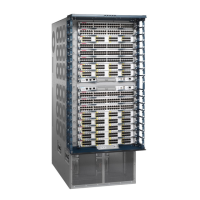
